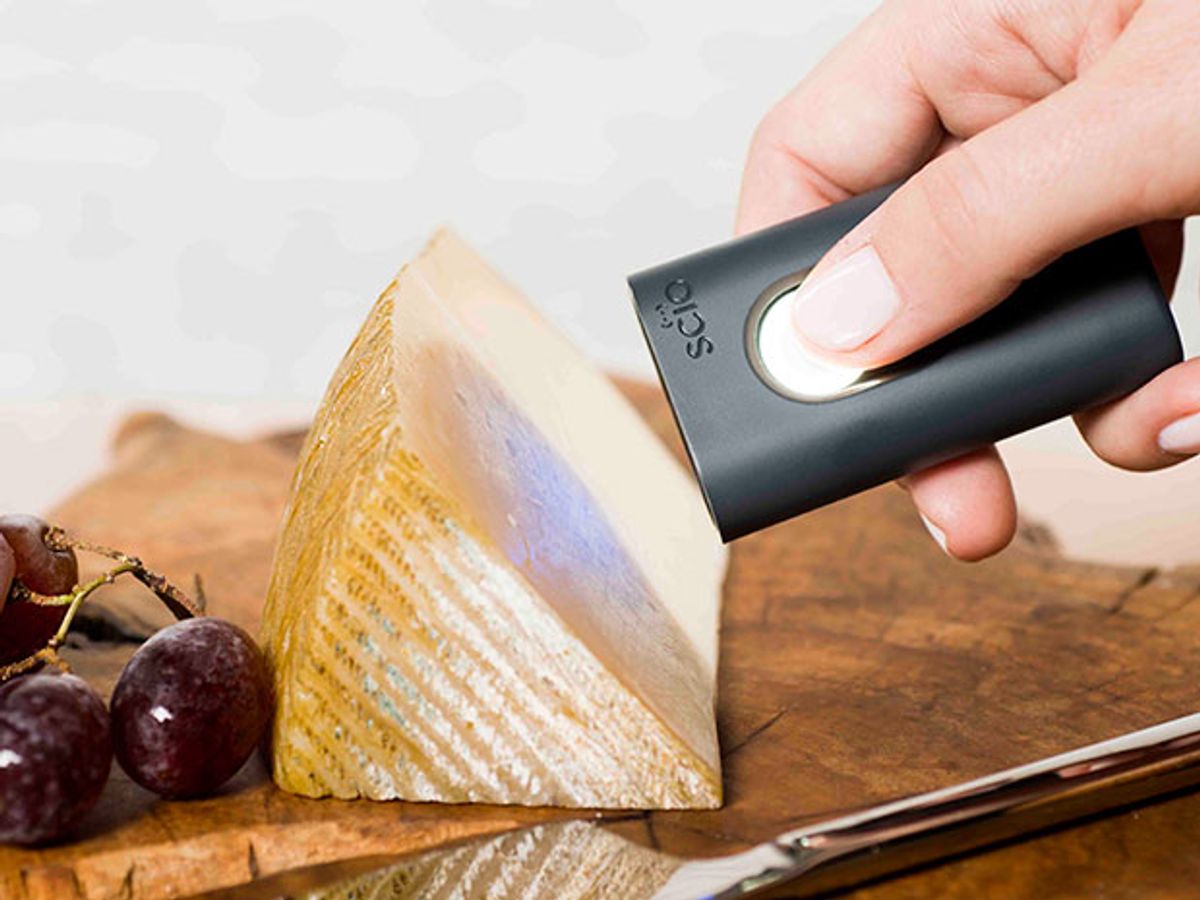We live in an age of wonder for consumer gadgets, and it’s only getting more wondrous. The latest trend is pocket-size labs, which let consumers do sophisticated chemistry tests as casually as they might snap a selfie.
Yet, even as I’ve marveled at the capacities of these miniature labs, I’ve wondered if people will really find a use for them.
Take SCiO for example; it’s a handheld scanner that uses spectroscopy to analyze the chemical composition of anything it’s pointed at. When a startup called Consumer Physics launched it on Kickstarter in 2014, enthusiastic backers contributed $2.7 million. When its inventors gave me a product demo back then, they talked about identifying foods for diet tracking and checking medications to make sure they’re not counterfeit.
Now, after two years of typical Kickstarter product delays, the SCiO is being shipped out to developers and early backers. And the first third-party app in the works for it, DietSensor, conforms to the SCiO inventors’ ideas. Users will simply point their SCiO scanners at “homogenous foods” (think mashed potatoes, says the app’s FAQ page, not a sandwich), and their smartphones will automatically display a breakdown of the food’s nutrients and enter the data into a diet tracking log.
I don’t know about you, but that app doesn’t convince me that the SCiO is useful. I eat a lot more sandwiches than mashed potatoes.
But Consumer Physics recently announced a partnership with Analog Devices, Inc. to build a slew of new SCiO-enabled apps; the announcement referred vaguely to wearable, medical, and industrial uses. So I put the question to Consumer Physics CEO Dror Sharon in a phone call: How can this fancy technology really become part of people’s lives?
“It’s surprising to see what people come up with once they have these capabilities,” Sharon said. “It’s beyond what we expected, such as checking the nutritional value or freshness of food.” He mentioned students working on a smart recycling bin that could detect different kinds of plastic, quantified selfers interested in determining their body fat percentages, and vigilant new mothers who want to know the nutritional value of their own breast milk.
Like many a CEO with a cool technology and a developer kit, Sharon said he’s providing a platform, and that we probably can’t even imagine all the clever apps that people will come up with. “Imagine one or two years from now, when this is in millions of consumer devices,” he said. “It opens up a new space, because there are problems you can solve with this sensor that can’t be solved any other way today.”
I was still trying hard to imagine this optimistic future when I checked out the developer forum on Consumer Physics’s website. And there at the top were two threads that finally made sense to me. They proposed apps to test the purity of illegal drugs, starting with ecstasy.
The idea came from several developers who work in harm reduction, a public health approach that prioritizes providing drug users with safer conditions. Ecstasy is often cut with other substances, ranging from inert fillers to dangerous chemicals, but since most labs won’t test illegal drugs, users have no way of checking what they’re taking. This situation sounds like a problem that the SCiO can solve, which indeed can’t be solved any other way today—although it might not be what Consumer Physics wants to be known for.
But another company with a pocket-sized lab is embracing applications involving recreational drugs. When the California startup MyDx began selling its smartphone-size chemical analyzer last August, its first offering was a marijuana analyzer and app.
The CannaDx system works like an e-nose, CEO Daniel Yazbeck told me. The user grinds up a tiny bit of the cannabis bud to volatilize its chemical constituents, then inserts the disposable cartridge into the device. Inside, 16 different sensors respond to the chemicals and an algorithm compares the sensor output to a reference database. CannaDx measures that particular plant’s mix of natural compounds, including the commonly known THC and other so-called cannabinoids, which account for pot’s potency and its physical and mental effects.
Different strains of marijuana have different characteristics, but those traits aren’t obvious when you’re just looking at a green bud, Yazbeck explained. So the CannaDx phone app displays the analyzed bud’s chemical profile and lists the ailments it might help (such as anxiety, pain, or epilepsy) as well as the feelings it might elicit (like happy, focused, energetic, or relaxed).
The company has sold more than 1,000 of the $700 devices already. “A lot of folks in the cannabis industry are buying, because they have nothing else working for them,” Yazbeck said.
Most of his customers are in the marijuana business. Growers who want to optimize their procedures are keeping track of growing conditions and using CannaDx to chart the resulting plants’ characteristics. Dispensaries are using it to determine exactly what they’re buying and selling, which enables them to recommend strains based on likely effects.
And now that Yazbeck has a working device, he’s developing other applications. First will be a system to check foods for pesticides, and down the line he may bring out apps to test water and air quality. “Cannabis was the trigger for everything else,” he said. “Now we can expand to the broader general population, and make it work for the consumer.”
But those other applications don’t get Yazbeck excited the way his marijuana app does. “There’s a gold mine in cannabis science,” Yazbeck said. So for this pocket-size lab, at least, finding killer weed is indeed the killer app.
Eliza Strickland is a senior editor at IEEE Spectrum, where she covers AI, biomedical engineering, and other topics. She holds a master’s degree in journalism from Columbia University.






